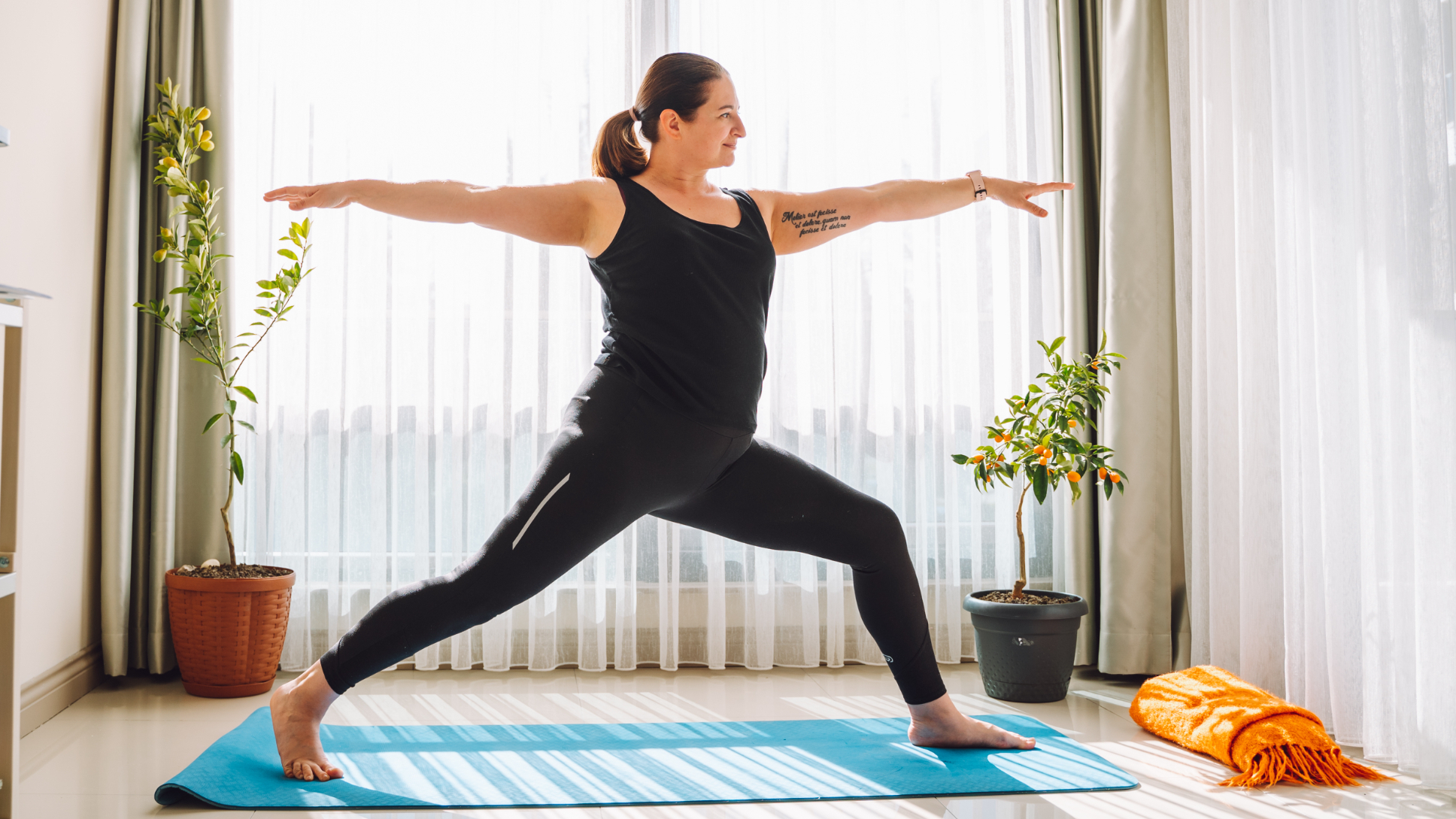Does yoga build muscle?
Yoga can strengthen your mind-muscle connection, but we asked a teacher if you can build muscle through yoga alone


Yoga is a practice with a lot of benefits for your mind and body. It's a great way to stretch and de-stress, but it's not a well-known exercise for building muscle.
For many people, weighted strength workouts are synonymous with building muscle, but could there be an alternative way to develop muscle without picking up a set of dumbbells or a kettlebell?
If you prefer rolling out your favorite yoga mat for a session, you may also be wondering if yoga builds muscle. To help answer that question, we spoke to Tamara Teragawa, a Master Trainer for YogaSix.
Tamara Teragawa is a yoga instructor for YogaSix and holds a 500 RYT certification with the Yoga Alliance after completing 500 hours of yoga teacher training.
Does yoga build muscle?
According to a meta-analysis published in the Internal Journal of Environmental Research and Public Health, a consistent yoga practice can improve balance, mobility, lower body flexibility, functional movement and muscle strength, though no studies show that it will reliably grow muscle.
Building muscle size, also known as hypertrophy, will likely require you to pick up those weights. Yet, yoga indirectly supports muscle building by helping you increase your range of motion, gain stability and improve your movement, which will pay off in the gym.
Teragawa believes practicing yoga regularly can help build muscle mass. Unless you take a yoga sculpt class (which uses weights), yoga helps build strength and muscles with only your bodyweight, so you can take a class or practice wherever you are.
Teragawa, who weight trains and practices yoga consistently, can attest to the results. “During yoga, the resistance training our body weight provides relies on eccentric contractions, encouraging the muscles to grow stronger and build,” she says.
Start your week with achievable workout ideas, health tips and wellbeing advice in your inbox.
Eccentric contractions are muscular contractions that occur during the lowering or lengthening phase of an exercise, such as the lowering portion of a squat or lunge. A review published in Frontiers of Sports and Active Living says eccentric contractions are an essential stimulus for growing muscle.
In fact, according to a review in Frontiers in Physiology, eccentric training may provide better muscle-building results than concentric contractions, which are the shortening or flexion portion of an exercise, such as when you raise back up from a squat or lunge.
It’s important to keep in mind that many other factors go into growing muscle. While beginners may be able to grow some muscle with yoga, eventually more weight (as part of a progressive overload plan) will be necessary to keep your muscle growing.
How long does it take to build muscle with yoga?
Consistency is key: aside from practicing yoga, you must consider other areas of your life, such as nutrition and sleep, according to Teragawa. A diet with plenty of protein is also a crucial part of any muscle-building program.
“You will also build muscle faster by practicing more challenging types of yoga,“ adds Teragawa. It may take a few weeks to make visible changes, but the physical changes start to happen immediately, which is why you may experience delayed-onset muscle soreness (DOMS) after exercise.
What type of yoga is best for building muscle?
Any exercise that stimulates the muscles to adapt and grow more will be best for building muscle, and some yoga types will work better than others for this purpose.
“Some types of yoga that challenge the body most and encourage muscle growth are ashtanga, vinyasa, power, and yoga sculpt,” says Teragawa.
She adds that practicing inversions, arm balances, and sustaining postures for extended periods all contribute to building muscles.
- Ashtanga: fast-paced and demanding on the body due to the constant movement from one posture to the next, always in the same order.
- Vinyasa: a vigorous style of yoga that flows from one posture to the next in a continuous format.
- Power yoga: a newer form that takes the intensity from Ashtanga but varies the poses. It is a bit like a more fast-paced, intense form of Vinyasa.
- Yoga sculpt: a fitness class based on Vinyasa yoga with resistance training and cardio intervals typically added to the session.
Is yoga as good as lifting weights?
If the goal is to build muscle mass, Teragawa agrees with the science that yoga doesn’t compare with lifting weights.
“Lifting weights stimulates muscle growth quicker and more efficiently,” she says. However, she believes that if the goal is to build beginner muscle and strength, then yoga can help.
“The type of strength developed during yoga with your body weight feels and performs differently than the muscle mass that builds during weight training,” says Teragawa, referring to the more functional and stable muscular stability and mobility gained from the bodyweight control mastered by practicing yoga.
if you're ready to get all of the benefits of yoga and develop this kind of stabilizing muscle, then these three beginner yoga exercises for building strength are a great place to start, and you don't need any equipment either.
Or maybe you'd prefer to stick with weight training using kettlebells to develop and grow your muscles. In that case, you can boost your mobility and flexibility with these yoga stretches for beginners instead.
Rachel is a lifelong health and fitness enthusiast with 15 years of experience, a certified personal trainer, and a fitness writer with bylines at Livestrong, Verywell, and Insider. She is passionate about clearly and accessibly communicating actionable and science-based fitness advice. Alongside her writing, Rachel also holds several certifications, including nutrition, prenatal/postpartum exercise, and pain-free performance. She lives in coastal Eastern Canada, and her hobbies include jiu-jitsu, hiking, and trips to the beach.
